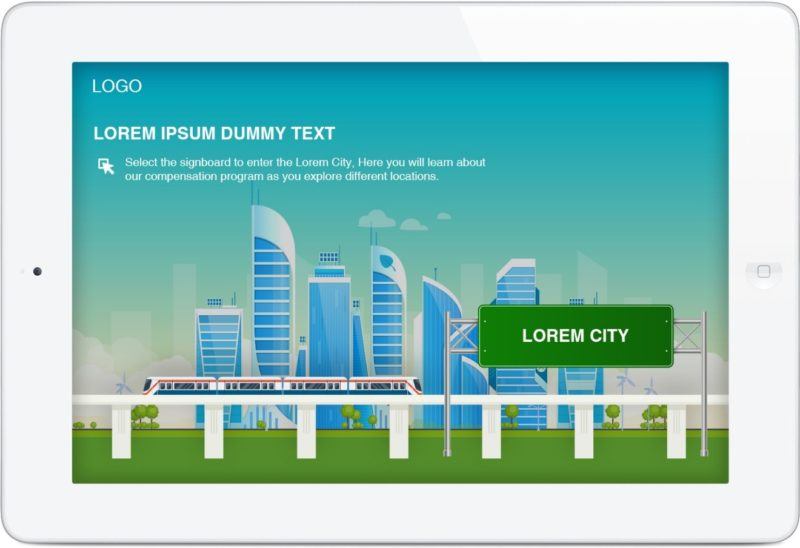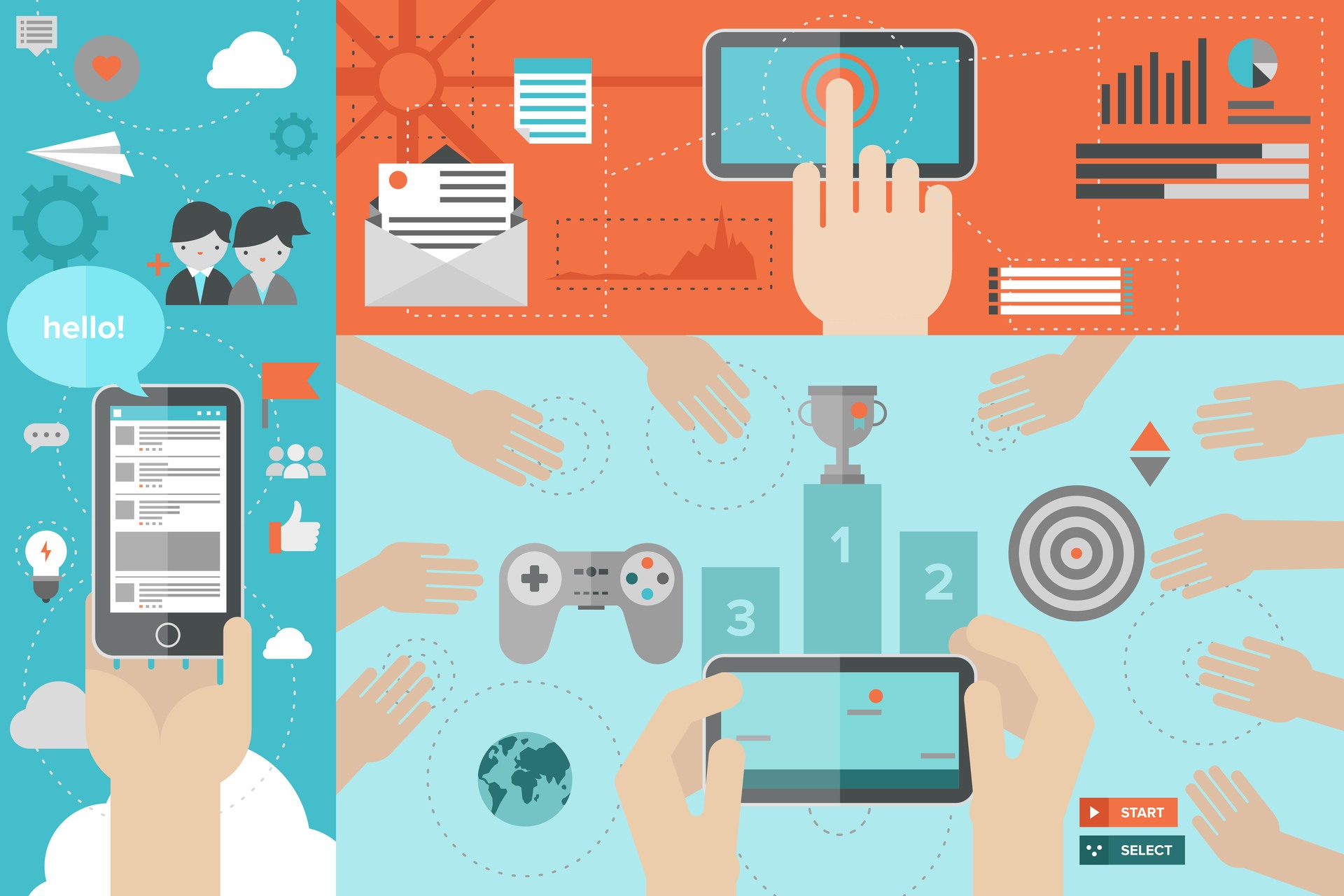The Benefits Of Gamification In Corporate Training
Gamification for learning—or, notably, serious learning—is all about using the principles and key elements of gaming to meet the required learning objectives.

The value that gamification brings in is summarized very effectively in the following statement as per Wikipedia:
"Gamification techniques are intended to leverage people’s natural desires for socializing, learning, mastery, competition, achievement, status, self-expression, altruism or closure. Gamification strategies use rewards for players who accomplish desired tasks or competition to engage players. Types of rewards include points, achievement badges or levels, the filling of a progress bar or providing the user with virtual currency. Making the rewards for accomplishing tasks visible to other players or providing leaderboards are ways of encouraging players to compete."
What Is The Value That Gamification Provides For Learners And Businesses?
As gamification offers a learning journey to have fun as you learn, the learners welcome it. However, L&D teams who invest in it still have reservations on the value, impact or ROI of this spend. As we pitch for gamification, we often come across the following questions on its value and impact:
- Will gamification truly help learners learn?
- Gamification is all about having fun, but can it drive learner performance?
- Does gamification offer tangible gain and value to learners and businesses?
However, the fact remains that the success of any learning strategy is determined by the effectiveness of its application. If you craft a gamification concept that can capture and retain the learners’ attention, challenge and engage them, ensure they complete the journey, plus teach them, you will have a high-impact training [1] that will indeed deliver the desired impact.
As a result, well-designed gamification-based training provides value to both organizations and learners at many levels as shown here.
The Value From The Learners’ Perspective
Let us take a look at the following stats that reaffirm the value of gamification-based learning from the users' perspective:
- 80% of learners claimed learning would be more productive if it were more game-oriented.
- 67% of students reported that a gamified course was more motivating than a traditional course.
The Value From The Organizations' Perspective
The use of gamification for learning provides several benefits to L&D teams:
- Gamification is a very engaging learning strategy and the right gamified approach will enable L&D teams to meet the learning outcomes—similar to other strategies used in traditional eLearning.
- As gamification for learning offers a more engaging and immersive learning experience, this would translate to higher completion rates. The gain would also be reflected in better recall or retention.
- The versatility of gamification for learning enables you to use it in various levels of learning—different cognition levels. You can use it not only for learning acquisition but also for practice for performance improvement, upskilling or successful application of learning at work.
- Bringing in a change in thinking and behavior is a tall order. Coupled with principles of spaced repetition, you can successfully leverage gamification to influence both aspects over time.
How Can You Create The Desired Impact Through Gamification For Learning?
At EI Design, we have a very mature gamification practice and, since the inception, our focus has been on using techniques that enable us to create the following values:
- High learner engagement
- Immersive approach
- High recall
- Better retention (sticky learning)
- Improved application of the acquired learning on the job
- Reinforcement
- Challenges that stimulate a refresh or review of primary learning resources
- Practice and proficiency gain
- Trigger change in thinking
- Influence behavioral change
To meet these gains, a majority of our solutions under the gamification for learning category use the following 8 elements. To help you understand how these 8 elements help you meet the learning goals, I highlight the value of each element by mapping it to the equivalent technique in traditional eLearning.
- Challenges
These map to the learning objectives or learning goals. - Levels
These map to the learning journey and as the learner goes through each level, it signifies a step up in proficiency for them. - Instant feedback
This helps learners know how they are faring against their learning goals and based on this, they can adopt the necessary measures to step up their performance. - Scores
They are indicators of their performance and are closely aligned to offering gratification as well as a sense of accomplishment. - Badges
As the learners go through the learning path and clear certain levels, they are given badges. These reflect affirmations for their significant achievements. - Leaderboards
They are dashboards that are used to provide a pictorial view of the overall progress—including against others. The analytics keeps learners connected to the learning journey and aligned to meeting their terminal objectives. - Competition
This can be leveraged effectively as it helps learners assess where they stand against other peers or competing teams. - Collaboration
This feature not only facilitates team-building but also enables learners to leverage the support of peers or guidance from experts to meet their goals.
Gamification In eLearning: 6 Killer Examples
I have selected 6 gamification examples from our rich repository to illustrate its value. These examples illustrate how gamification can be used across different corporate training programs for value ranging from better recall, retention or application on the job.
1. Induction Program For A Globally Renowned Entertainment Company
The purpose of the course was to orient employees with the company’s history, policies and benefits, procedures to be followed, and career growth opportunities through a fully gamified approach.
A guided visual tour, relatable terms, and rich and customized visuals and details created what the organization called a "magical" learning experience.


2. An Experiential Induction Program For A Global Retail Giant
A gamified onboarding training opportunity was created for a customer care team to help them acclimatize with the culture of the organization.
The entire course in a 360-degree platform with Virtual Reality (VR) features, personalization through avatars, and leaderboards and analytics to understand the efficacy of user interactions are the highlights.


3. Professional Skills Enhancement: Account Management Fundamentals For Project Managers And Account Managers
This course is a great example of a gamification approach with multiple levels that reflect the proficiency gain as the learners move from Level 1 to Level 4.
- The learning journey is driven by scenarios or challenges matching real-life situations.
- Unlike the classic approach of having to go through theory and then practice, here the learners can directly jump into taking a challenge. This helps them ascertain if they truly know the concept. They can seek support through an expert—if they can’t clear the challenge.
- We also added curated content that offers new content to the learners every subsequent time they come back. This is a great way to have them refresh their learning.



4. Rewards And Recognition
This uses an avatar-based approach for personalization along with gamification.
- The learners go through a series of locations in a fictitious city and have gamified activities that map to the different aspects of the organization’s compensation program.
- The simulated activities reinforce the concepts the individuals must understand and remember in order to win. The scores lead them to gain the reward.




5. Partial Gamification: Features Of A Gamified Activity
This example illustrates how you can add punch to enhance a traditional eLearning course by implementing partial gamification techniques. The usage of gamified activities can uplift the engagement quotient of the standard eLearning course manifold.
- We used this approach in a course on time management, and the activity was for identifying time wasters. It involved rapid thinking to select a time-waster activity, which was mapped to floating clocks that would appear from different directions. If you were not paying attention, you would miss and get a negative score!
- Unlike a standard approach, like a drag-and-drop interaction, this approach is fun and pushes learners to focus, while creating a more engaging and rewarding learning experience.

6: Partial Gamification: Features Of A Gamified Assessment Designed As A Micro-Challenge
This example features a very versatile gamification approach. We created a bank of gamified assessments, each one in a unique format as a micro-challenge.
Designed in a microlearning format that can be consumed on the go—it features a mobile-first design—the questions can be used to support any formal training for:
- Practice
- Proficiency gain
- Post-training connect feedback that would help them refresh the primary training


As you have noticed in the featured examples, gamification is a great strategy to provide an immersive learning experience. It is an extremely versatile approach and its application will help you improve learning, application on the job, and the tougher mandate of behavioral change. I hope my article helps you leverage gamification for training [2] in case you haven’t used it in the past.
Meanwhile, if you have any specific queries, do contact me or leave a comment below.
References:
[1] How Can You Combine Mobile Learning And Gamification To Create High Impact Training?
[2] An Introduction to Gamification in Corporate Training
Sources:
- eLogic Learning
- Taylor & Francis Online
Read More:
- eBook: How To Enhance The Impact Of Your Corporate Training With Next Gen Gamification Solutions
- eBook: eLearning Trends In 2020: Featuring Tips On How You Can Leverage Them For Learning, Performance Gain, And Behavioral Change
- Gamification Trends in 2020
- How To Use Gamified Microlearning Activities To Boost The Impact Of Your Corporate Training
- 4 Next Gen Gamification Solutions To Enhance Your Corporate Training









